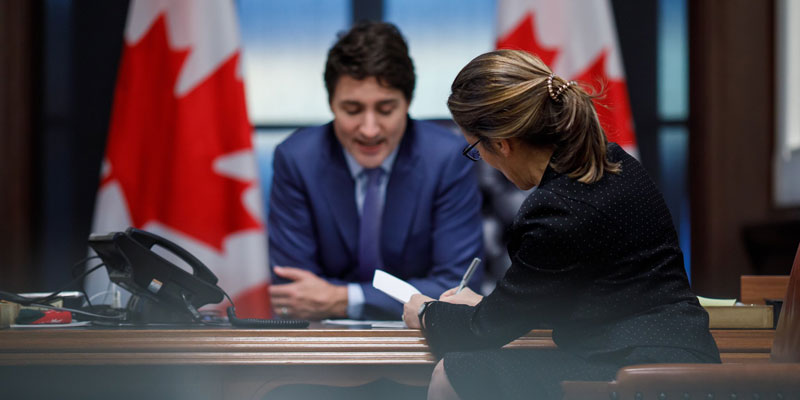Federal finances remain vulnerable to fluctuating interest rates

There’s been a lot of movement in Ottawa lately, including Bill Morneau’s resignation as federal finance minister, with Chrystia Freeland taking his place. Unfortunately, the Trudeau government’s recent fiscal “snapshot” only added to the uncertainty. Why? Because there’s no plan to restore sustainability in federal finances. This leaves businesses and individuals worried that taxes will rise—perhaps substantially—to pay for increased spending and debt.
The combination of uncertainty and risk of future tax increases means the very people—entrepreneurs, businessowners and investors—we need to facilitate and sustain economic recovery will remain on the sidelines.
Going into the COVID recession, the Trudeau government was spending at all-time high levels, with planned spending of $9,306 per person in 2020 (before any additional spending related to the pandemic). As a reference point, that’s more than 50 per cent higher than the 2009 recession and more than 74 per cent higher than spending during the peak of the Second World War (all adjusted for inflation).
In its snapshot, the government announced it will issue a “historic” level of long-term bonds, seeking to lock-in historically low interest rates. This means the government will issue more long-term bonds under the rationale that interest rates are low now and therefore the government saves money by locking in interest rates at low rates.
However, this implies that government expects interest rates to rise in the medium-term. If the government did not expect that to be the case, there would be little to no advantage to “lock in” low interest rates now. This has implications for federal finances from the perspective of interest rate risk, meaning the risk to the government from fluctuations in interest rates. It’s therefore worthwhile to look at the data on debt-servicing costs, especially now that Canada’s debt levels have risen substantially.
While we cannot know how interest rates will trend, we can look to the immediate past to evaluate the risk involved with new debt.
For example, if Ottawa paid the average debt-interest costs from last year (2019-20), at 3.4 per cent interest, federal debt-servicing costs this year would rise from $19.5 billion to $36.2 billion, an almost doubling of interest costs, which would make the deficit even larger, requiring yet more borrowing.
This estimate may even underestimate the risk. Looking further back to 2010/11, the federal government was paying approximately 5.1 per cent interest on the debt. Applying that number to current federal debt would result in $54.5 billion in debt-servicing charges, almost triple the current cost. Furthermore, these estimates are all based on the relatively low rates government was paying over last decade. Any return to historical norms would significantly drive up debt-servicing costs.
A rise in interest rates could also lead the government into a downward cycle of increased deficits. As shown above, higher debt-servicing costs would result in higher deficits. Higher deficits risk a downgrading of Canada’s debt by rating agencies, which increases the risk premiums attached to our debt. Simply put, larger deficits result in higher costs. The higher interest costs result in even higher deficits and the cycle starts again.
This is not an abstract or theoretical scenario. It happened in Canada as recently as the early 1990s, when federal debt-interest costs routinely eclipsed 30 per cent of revenues (2020’s projected number is just over 7 per cent). This was due to persistent deficits, debt and rising interest rates.
All of the above underscores the need for the federal government to bring restraint to Canada’s finances. While future interest rates are uncertain, one thing that government can control is spending. To date, the government has shown no willingness to deal with increased federal spending, nor even acknowledge that this should be a priority. Step one in managing the risk of new debt, and beginning the economic recovery, should be a credible plan to bring spending under control. Hopefully the new finance minister understands.


